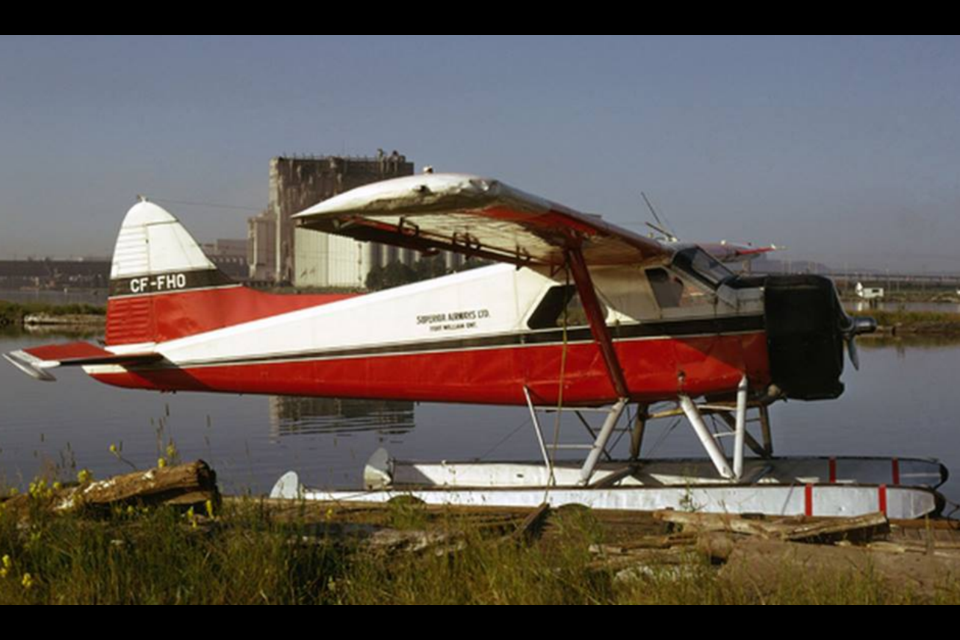OTTAWA —The Transportation Safety Board has investigated 23 crashes involving stalled De Havilland DHC-2 Beaver aircraft which resulted in 47 deaths, according to TSB chair Yoan Marier.
The popular and historic bush plane is at the centre of an ongoing disagreement between the TSB and the government department responsible for making aviation safety rules.
The TSB wants to see the mandating of automatic stall warning systems and shoulder harness passenger restraints for all seats for the De Havilland DHC-2 Beaver aircraft. When the DHC-2 was certified in 1948, such warning systems weren’t required (even though they are on newer planes), according to the TSB’s recommendation.
And in its recommendation around shoulder harnesses, the safety board says “a significant portion of the commercial floatplane fleet in Canada was manufactured before shoulder harnesses were required for passenger seats, and remains in this configuration today.”
Currently, Transport Canada recommends both be installed on the Beaver, but does not mandate them.
A crash involving a DHC-2 in Red Lake where one passenger died was the subject of a recent safety board investigation. It determined the plane stalled in mid-air and that plane didn’t have either of those recommended upgrades in place.
“From our perspective, the installation of an aftermarket stall warning system on these Beavers would be an additional defence for pilots to help them being aware of any situation where they are approaching the stall characteristics of their aircraft,” Marier said.
The planes give “very little warnings to pilots that it is stalling, which is why this aftermarket stall warning system can help pilots as they are approaching the stall speed,” he added.
The TSB’s Red Lake report stated Transport Canada hasn't adopted that recommendation because it believes the warning system would give the pilot “little to no time to react and recover," something the safety board does not agree with.
According to the TSB, De Havilland sent out a technical bulletin in 2014 recommending stall warning systems be installed or enhanced on the DHC-2.
As for the shoulder harnesses, the safety board said they do a lot to reduce flail injuries, or damage caused when the body violently and involuntarily moves, during a crash. It is recommending the installation of shoulder harness restraints for all passenger seats in seaplanes in commercial service certificated for nine or fewer passengers — which includes the Beaver.
According to the TSB, Transport Canada has told them older aircraft frames aren't "robust enough" to support them and forcing their installation "would not produce a significant reduction in fatalities and would not offset the cost of modifying multiple models of seaplanes."
“Again, we disagree with Transport Canada's position on this,” Marier said, referring to the federal regulator not mandating them. “The risks presented by inadequate occupant restraint is well-known to exist.”
According to the Canadian Civil Aircraft Register, there are 321 records of DHC-2 Beaver planes registered in Canada, including the one that crashed in Red Lake.
The TSB first issued the recommendation about the stall warning systems in 2017, roughly two years after the crash of a DHC-2 after it stalled in mid-air in Quebec; the pilot and five passengers died. The recommendation for the shoulder harnesses dates back to 2013, roughly a year and a half after a Beaver aircraft crashed into a lake north of Cochrane, killing two of three on board.
The safety board tracks progress on its recommendations — currently, they have both recommendations around the stall warning systems and shoulder restrains classified as “dormant.”
“This is based on the response we received from Transport Canada,” he said. “Basically, they essentially told that they were not going to do anything about the recommendations, which is why, from our perspective, we think that the chances of progress on this is low.”
In an email to Newswatch, Transport Canada said it values the TSB’s recommendations, reviews them thoroughly and attempts to implement them “wherever practicable.”
The regulator said it stands by its conclusion that stall warning systems on the DHC-2 are not warranted, and that requiring the installation of shoulder harnesses for all seats on older aircraft “was not practicable.” Transport Canada said it did, in response to a pair of TSB recommendations — including the one regarding shoulder harnesses — require flight crews to have underwater escape training and mandated improvements to emergency exits.
“Transport Canada remains committed to continuously enhancing the safety of the transportation system,” the regulator said.
